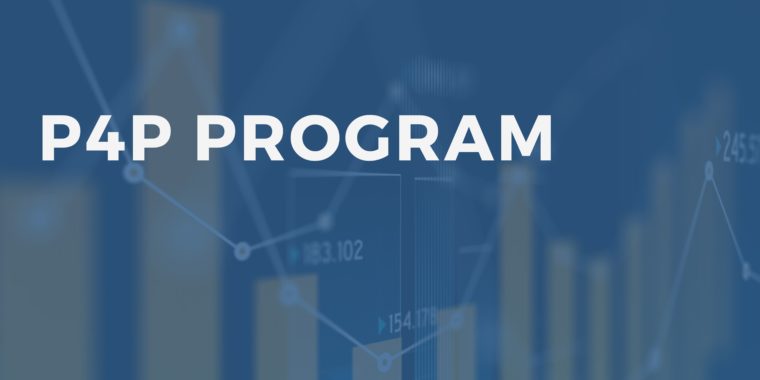Beginning in 2018, Blue Cross Blue Shield of Michigan (BCBSM) allocated 10% of its Pay-For-Performance (P4P) program to a metric based on Michigan Value Collaborative (MVC) claims data. In 2024, the BCBSM P4P Quarterly Workgroup approved changes to how hospitals will be evaluated in the upcoming two-year cycle for Program Years (PYs) 2026 and 2027. These program years will use claims data from 2025 and 2026, respectively, for the performance years (Figure 1). Hospitals recently received selection reports to aid in their decision-making on which metrics to choose within the new program structure.
What is staying the same from PYs 2024-2025?
Similar to the PY 2024-2025 cycle, hospitals will continue to be scored out of 10 points maximum. They will also continue to be evaluated on their risk-adjusted, price-standardized total episode spending for a selected condition; their rate for a selected value metric; and their engagement in MVC activities. Hospitals can continue to select coronary artery bypass graft (CABG), congestive heart failure (CHF), or chronic obstructive pulmonary disorder (COPD) for episode spending scoring. Similarly, most of the value metric options remain the same with changes in definition for only the preoperative testing and sepsis value metrics.
Each hospital’s episode spending and value metric selections will continue to be scored on improvement compared to the hospital’s own past performance as well as on achievement relative to an MVC cohort. Each hospital will continue to be awarded the greater of the two scores, either improvement or achievement, which are calculated using Z-scores. Cohort designation is still based on bed size, critical access status, and case mix index.
What is changing for PYs 2026-2027?
While the overall program structure will be scored to a maximum of 10 points (Figure 2), the scoring within the components varies from PY 2024-2025. The PY 2026-2027 cycle is made up of a maximum of three points from an episode spending metric, a maximum of four points from a value metric, a maximum of two points from engagement activities, and a maximum of one point from a health equity measure (a new component). For this cycle, hospitals will need to select an episode spending condition and a value metric. The health equity and engagement activities do not require selection. Eligibility for selections are determined based on case counts. To be eligible to select a condition or value metric, a hospital must have at least 20 cases in the full baseline year of 2023.
Although three episode spending conditions offered in PYs 2024-2025 will continue to be options in PYs 2026-2027 (i.e., CABG, CHF, COPD), MVC retired colectomy (non-cancer), joint replacement, and pneumonia from its episode spending menu. In addition, MVC is adding percutaneous coronary intervention (PCI) as an episode spending condition. The full menu of episode spending conditions for PYs 2026-2027 will be CABG, CHF, COPD, and PCI.
MVC is also modifying two of its value metrics. The sepsis value metric in PYs 2026-2027 will be 14-day follow-up after sepsis rather than 30-day risk-adjusted readmissions after sepsis. This change is more closely aligned with the HMS incentive for increasing post-discharge care coordination. The preoperative testing value metric definition will also be different in PYs 2026-2027. The first change is that all three included procedures (i.e., laparoscopic cholecystectomy, inguinal hernia repair, and lumpectomy) will be combined for scoring. Previously, each procedure was treated separately, and hospitals were scored on the best of the three. The second change is that lab testing will be included in the definition. Previously, preoperative lab tests such as complete blood count, metabolic panel, coagulation studies, and urinalysis were not included in calculating the testing rate prior to the three procedures. Going forward, MVC will identify preoperative testing that occurs in the 30 days prior to MVC-defined laparoscopic cholecystectomy, inguinal hernia repair, and lumpectomy for any of the following tests: complete blood count, basic metabolic panel, comprehensive metabolic panel, coagulation studies, electrocardiogram, echocardiogram, cardiac stress test, chest x-ray, pulmonary function test, and urinalysis.
Brand new in PY 2026-2027 will be the addition of a claims-based health equity measure, for which hospitals will be assessed using an index of disparity (Figure 3). The index of disparity (IOD) will measure the spread of 30-day risk-adjusted all cause readmission rates for medical conditions among different payer categories within their hospital. Scoring for this measure will begin in PY 2026, but hospitals will begin to see sample scoring for this measure on their PY 2025 scorecards. Hospitals can earn the health equity point through both improvement and achievement pathways, similar to their episode spending and value metric selections.
The payer mix for PYs 2026-2027 will now include Michigan Medicaid episodes in addition to the previously included BCBSM Preferred Provider Organization (PPO) Commercial, BCBSM PPO Medicare Advantage, Blue Care Network (BCN) Health Maintenance Organization (HMO) Commercial, BCN HMO Medicare Advantage, and Medicare FFS coverage. The addition of Medicaid takes the MVC Component of the BCBSM P4P Program closer to a more diverse and representative population. Medicaid data are reflected in the baseline measures provided in the PY 2026-2027 selection reports.
Next Steps for PY 2026-2027 Selections
The P4P selection reports distributed earlier this week include tables for the various episode spending and value metric options, identifying case counts in the baseline year, the hospital’s average payment or rate of utilization, the cohort and MVC All average payments or rates, and the projected changes necessary for the hospital to earn maximum points. Accompanying the reports was a health equity measure document that details the methodology behind this newly introduced measure along with scoring examples.
For a detailed summary on the methodology, please refer to the PY 2026-2027 P4P Technical Document on the MVC P4P webpage. MVC has also developed an FAQ document to answer some of the mostly frequently asked questions regarding PY 2026-2027 changes, and is offering webinars on Nov. 19 at 1 p.m. [register here] and Nov. 21 at 10 a.m. [register here] to answer member questions. Member hospitals should submit their PY 2026-2027 selections by December 13, 2024, using this Qualtrics survey. Please contact the MVC Coordinating Center if you have any questions.







